25 Incredible Photos Of Life In 1979 That The History Books Skipped
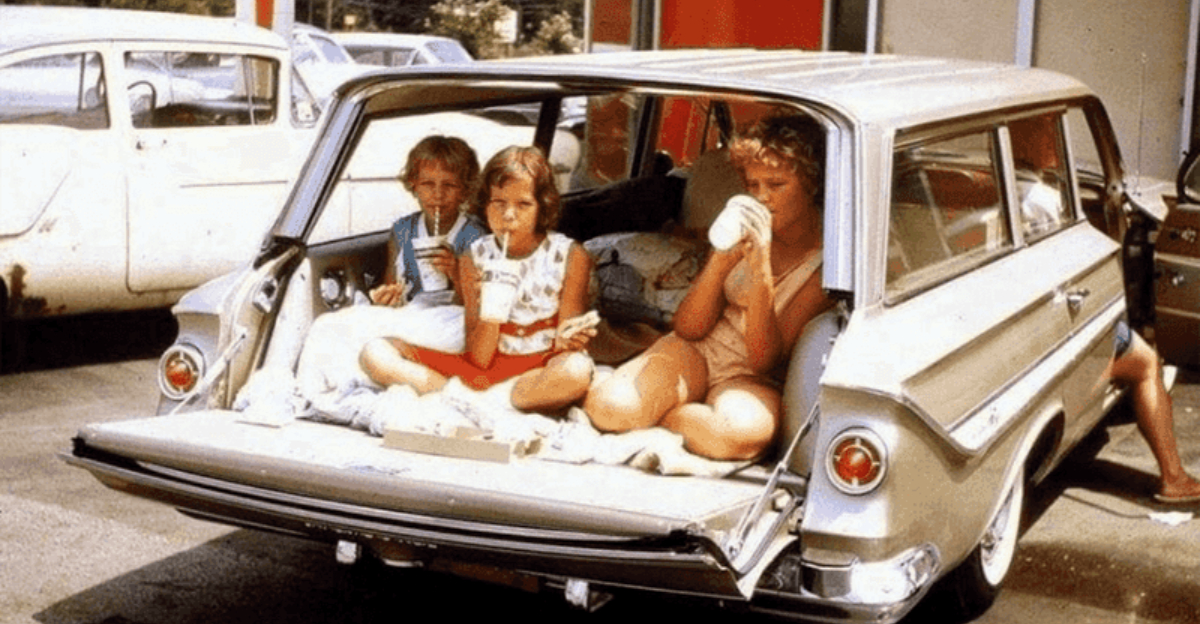
The year 1979 wasn’t just another chapter in history—it was a full-blown vibe.
It was the era of polyester pants so tight they squeaked when you walked, roller discos where you could groove under a spinning mirror ball while rocking knee-high socks, and conversations tethered by a phone cord that somehow never reached quite far enough for privacy.
It was a time when microwaves were still suspicious, cassette tapes were prized possessions, and you had to wait until Saturday morning for cartoons—imagine the patience! While the history books were busy tracking world events and major milestones, they completely skipped over the glorious quirks and everyday wonders that made 1979 unforgettable.
So dust off your lava lamp, grab a Tab from the fridge, and prepare for a groovy stroll down memory lane. Here are 25 snapshots of life in ’79—fun, funky, and fabulously weird in all the best ways. You’ve been warned: nostalgia ahead!
1. Corded Phones and Privacy
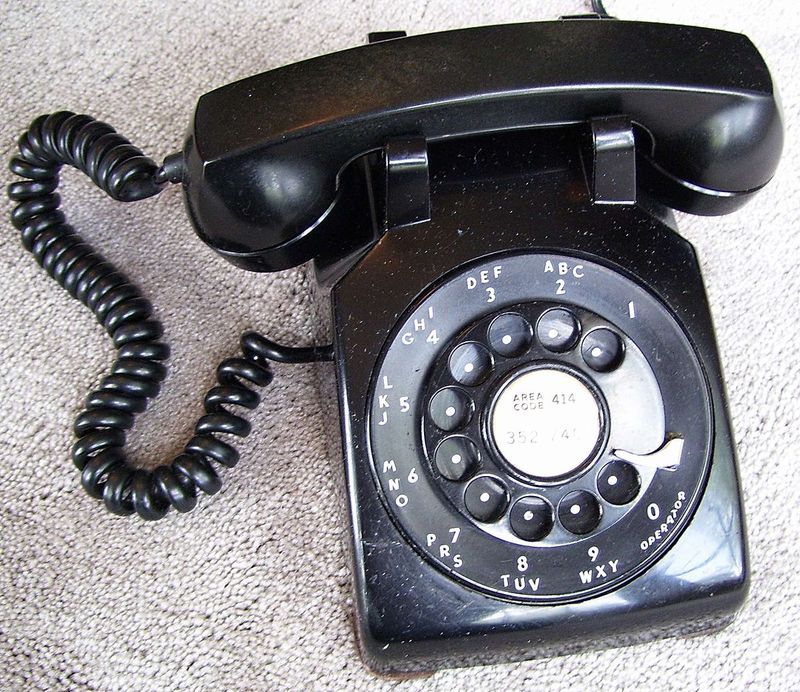
Back in 1979, privacy was dictated by the length of your phone cord. With conversations as private as the hallway was long, teenagers mastered the art of whispering sweet nothings while dodging eavesdropping siblings. The corded phone became a lifeline, with tangles representing the complexity of teenage emotions. Parents, of course, were oblivious to the conspiracies conducted just a few feet away, creating a silent dance of secrecy and tangled wires.
The hallway became a stage where every actor knew their role. Anxious looks were exchanged as siblings eavesdropped, pretending to pass by casually. Meanwhile, parental authorities were blissfully unaware of the drama unfolding inches away. Such was the delicate balance of privacy, trust, and tangled telephone cords.
This era of communication, captured in vibrant memories, defined a generation. Conversations were an adventure, tangled in both wires and emotions. It was the theater of everyday life, where the hallway was the spotlight and the phone cord the ever-present prop.
2. Cassette Tape Surgery
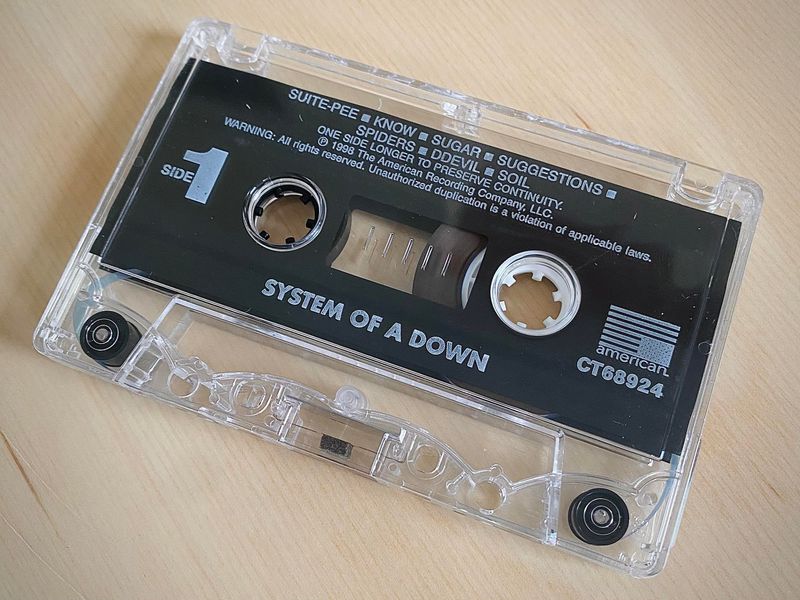
In 1979, music fans learned a unique skill: cassette tape surgery. When your favorite tape got chewed up in the player, it was time to grab a pencil and perform delicate surgery. With a twist and a turn, the chewed tape would be carefully unwound and, if lucky, saved from the brink of destruction. This process, akin to a heart operation, was conducted with precision and a bit of desperation.
Music lovers were part doctor, part DJ, stitching together melodies with pencils instead of needles. Each successful repair was a testament to patience and skill, restoring rock and roll or disco back to life. The pencil, often an unsung hero, spun tales of revival and resilience.
Despite the frustrations, these fixes offered a sense of accomplishment. Each repaired cassette was a badge of honor, worn proudly by those who dared to defy the odds. The art of cassette surgery was a testament to the lengths fans would go for their tunes.
3. The Art of TV Antenna Yoga
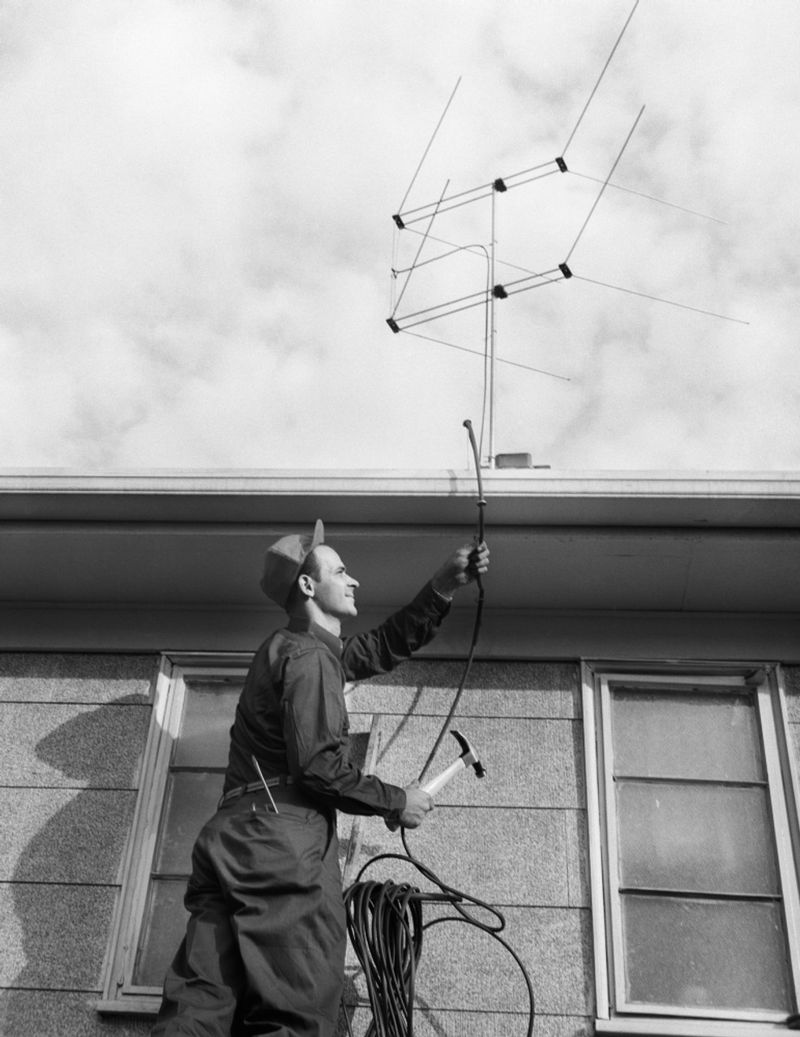
In 1979, adjusting the TV antenna was a household dance form, affectionately known as TV Antenna Yoga. One didn’t merely fiddle with rabbit ears; it required a full range of motion and a bit of luck to find the perfect signal. This unique dance brought families together, united in the quest for clarity amidst the static fog.
Families would contort and twist, performing a symphony of movements to coax the signal into alignment. It was an exercise in patience and creativity, with everyone taking turns in this static ballet. The triumphant moment when the picture clicked into place was celebrated like a victory in the Super Bowl.
TV Antenna Yoga turned living rooms into performance spaces, where each family member took the stage. The challenge of tuning into a favorite show became a shared tradition, a bonding experience that transcended generations. In those moments, the art of the antenna dance became the heart of family entertainment.
4. Bicycle Freedom
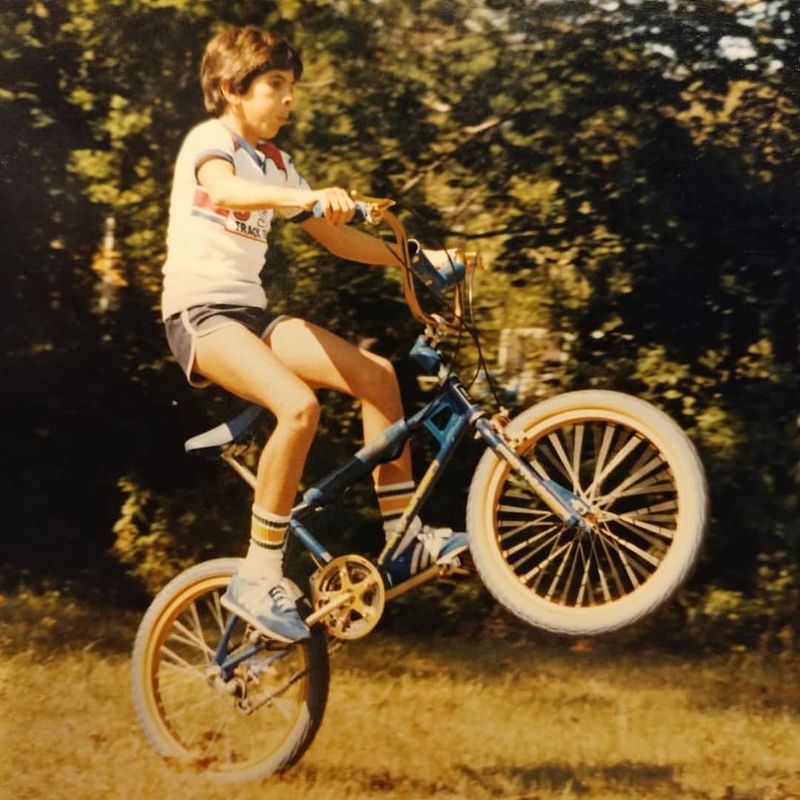
The year 1979 was a time of bicycle freedom, where kids rode bikes without helmets, free-range, until the streetlights flickered on. It was an era of adventurous exploration, with the wind in their hair and laughter in the air. Parents trusted the glow of streetlights as the universal signal for the end of daily escapades.
Children raced down the streets, mastering the art of balance and speed. Their bikes, cherished companions, were extensions of their adventurous souls. Without the constraints of helmets, freedom was the name of the game, and every ride was an opportunity for discovery.
As the sun dipped below the horizon, the flickering streetlights signaled the end of a day filled with exploration. These rides were more than just a pastime; they were formative experiences that taught independence and courage. The streetlights’ gentle glow marked the boundary of a world where imagination ruled and the roads were waiting to be conquered.
5. The “Farrah Fawcett Flip”

In 1979, the “Farrah Fawcett Flip” was more than a hairstyle; it was a phenomenon that swept through salons like a gust of perfectly feathered wind. Everyone’s sister or aunt attempted this iconic look at least once, striving for that effortless blend of glamour and volume. It was the epitome of style, with each flip a testament to the era’s love for bold fashion statements.
Achieving the perfect flip required dedication, a deft hand, and a can of hairspray. Stylists became artists, sculpting waves of hair into aerodynamic perfection. The result was a head-turning style that captured the spirit of the time, embodying both sophistication and fun.
The Farrah Fawcett Flip wasn’t just a hairstyle; it was a cultural marker. It spoke of confidence and charisma, with wearers embracing their inner stars. The flip transcended mere fashion, becoming a symbol of empowerment and individuality in a world eager to embrace new trends.
6. Roller Disco Fever
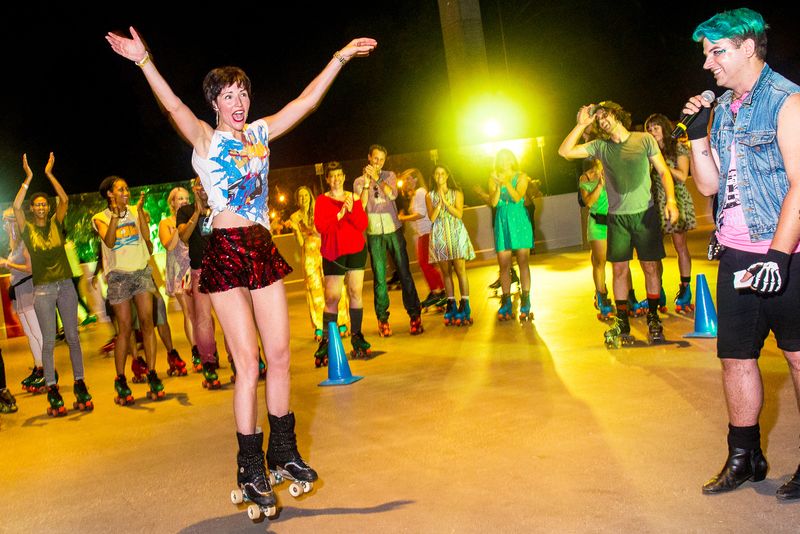
Roller Disco Fever in 1979 was a dazzling fusion of fashion, music, and movement that swept across dance floors like a glittering hurricane. Clad in shiny outfits and knee-high socks, enthusiasts glided and twirled, turning roller rinks into vibrant spectacles of fun and freedom. Every spin on the wheels was a celebration of life and style.
Skaters moved to the rhythms of disco beats, their moves as smooth as the vinyl records spinning in the DJ booth. The rink was a stage where everyone was a star, and the flashing lights set the scene for memorable nights of carefree joy. The exhilarating atmosphere was infectious, drawing people in to lose themselves in the dance.
The allure of roller disco was irresistible, combining exercise with entertainment. It was a place where friendships were forged, romances began, and communities flourished. The fever for roller disco burned brightly, leaving a legacy of joy that resonated long after the music stopped.
7. The “Pet Rock” Aftershock
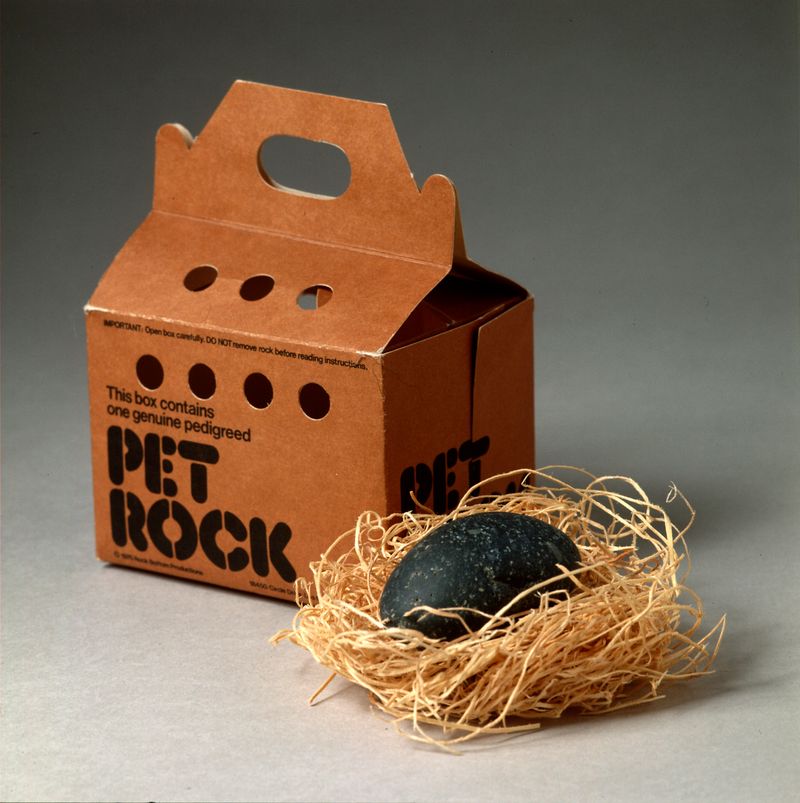
By 1979, the Pet Rock had become a relic, yet it still held a coveted spot on many a dusty shelf. This quirky fad from the mid-’70s initially took the world by storm, with people proudly adopting these inanimate companions. Though the craze had waned, the rocks remained as quirky reminders of a simpler, sillier time.
Pet Rocks were more than mere stones; they were conversation starters and symbols of the playful absurdity of consumer culture. Each one came with a care manual, humorously suggesting feeding and bathing routines. It was a testament to the power of marketing and the willingness of people to embrace the unexpected.
As the years rolled on, these rocks gathered dust but retained their charm. They were tangible echoes of a time when simplicity and humor collided in the realm of consumer goods. The Pet Rock’s legacy persisted, a reminder of humanity’s love for whimsy and the unexpected.
8. Disco Demolition Night
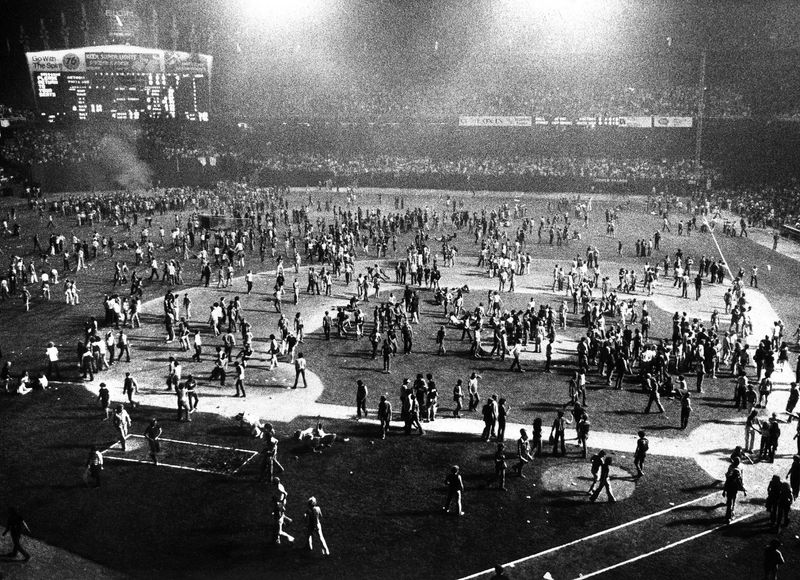
Disco Demolition Night in 1979 was a riotous clash of musical cultures, as fans gathered to ceremoniously destroy disco records. This infamous event at Comiskey Park was both a protest and a celebration, as rock lovers sought to reclaim the airwaves from the perceived encroachment of disco.
The night was a chaotic blend of music, emotions, and flying vinyl. Records were smashed, and the crowd roared, caught up in the fervor of the moment. It was a symbolic battle, with disco on one side and rock on the other, each vying for supremacy in the cultural landscape.
Despite the chaos, the event underscored the passion and diversity of the musical era. Disco Demolition Night became a turning point, highlighting the tensions and transitions within the music world. It was a night of destruction that paradoxically celebrated the vibrancy and vitality of music, leaving a lasting impact on those who witnessed it unfold.
9. Wacky WallWalkers
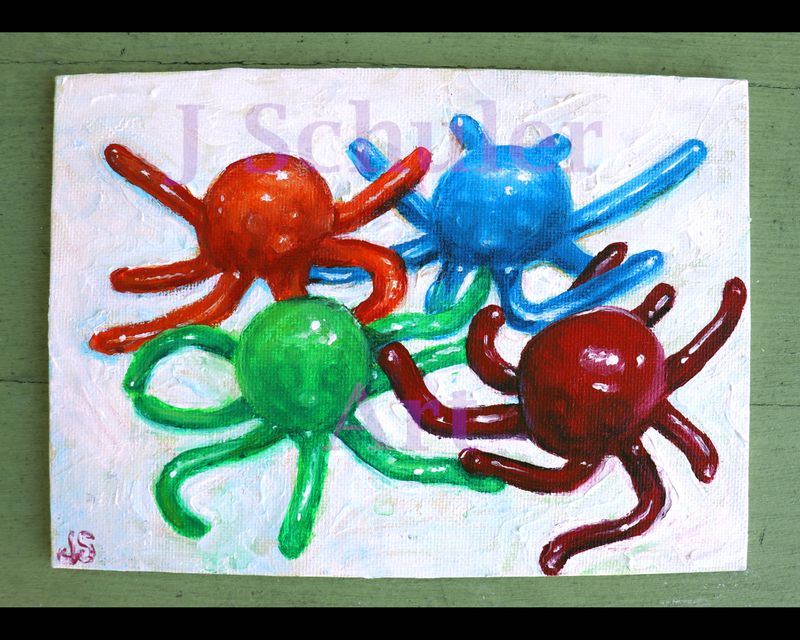
In 1979, Wacky WallWalkers captured imaginations with their sticky, stretchy antics. These quirky toys, resembling octopuses, were tossed onto walls to slowly crawl down in mesmerizing fashion. They turned vertical surfaces into playgrounds, providing endless amusement for kids and adults alike.
The simple joy of watching a WallWalker descend was oddly hypnotic. Each sticky plop as it hit the wall was a promise of entertainment, as gravity worked its magic on the brightly colored critters. It was an exercise in patience, waiting for the unpredictable path to unfold.
Wacky WallWalkers were more than toys; they were cultural phenomena. They brought smiles, laughter, and a touch of whimsy to the everyday. This small craze left a big impression, demonstrating that even the simplest concepts could spark joy and ingenuity. Their legacy is a sticky testament to the charm of novelty and the joy of play.
10. Long Gas Lines and “Odd-Even” Days
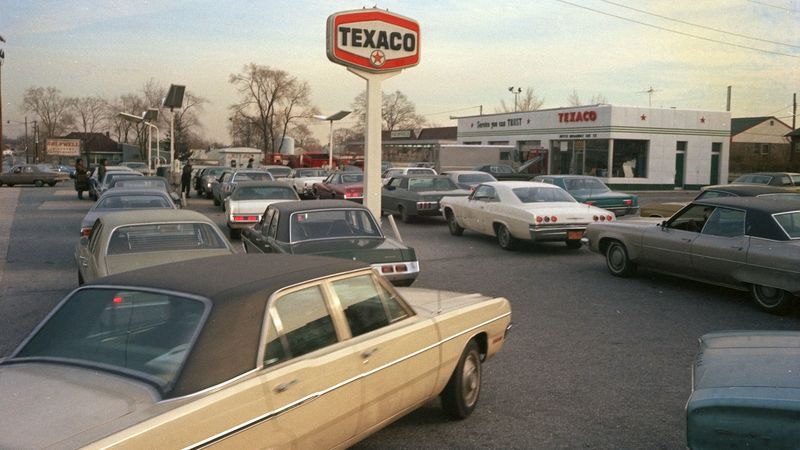
Long gas lines and “Odd-Even” days were the realities of 1979, as fuel scarcity led to ingenious strategies and long waits. Drivers lined up for hours, engines off, as rationing dictated who could fill up on any given day based on their license plate number. It was a test of patience and creativity.
As cars snaked around blocks, drivers exchanged stories and tips, turning a chore into a communal experience. The odd-even system, while frustrating, became a puzzle to solve, with some trying to outsmart the system for an extra gallon or two. It was a time of resourcefulness and camaraderie born from necessity.
Despite the challenges, these days were marked by resilience. The long waits fostered community spirit, as strangers became allies in the shared quest for fuel. This period of scarcity became a defining chapter, highlighting humanity’s adaptability and the power of collective patience in the face of adversity.
11. Station Wagon Backseats

In 1979, station wagon backseats were the ultimate adventure zones for kids. Facing backward, they waved at strangers with unbridled joy, transforming every car trip into a journey of discovery and interaction. The lack of seatbelts was a testament to the era’s carefree spirit, where freedom and fun ruled.
These backseats offered panoramic views of the world passing by, as children created games and stories to fill the travel time. The thrill of seeing the world in reverse added an extra layer of excitement to road trips. It was an era where imagination was the only seatbelt needed.
The station wagon became a microcosm of adventure, a moving playground fostering creativity and connection. It was a time of innocence and exploration, where the backseat was a stage for waving, laughing, and dreaming. These journeys left lasting memories, evoking nostalgia for a simpler time of open roads and open hearts.
12. Polaroid Pictures
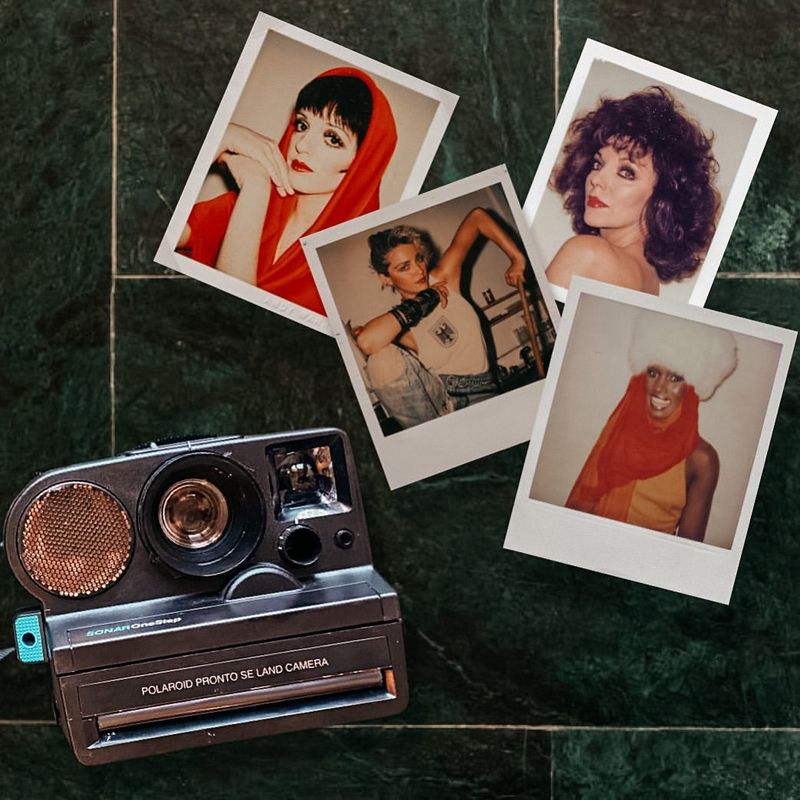
In 1979, the magic of Polaroid pictures captured moments in an instant, shaking them to life as they developed before your eyes. This marvel of technology brought the past to the present, with each photo a tangible memory to hold and cherish.
Gatherings were incomplete without the click-whirr of a Polaroid camera, as people eagerly awaited the reveal. The anticipation built with every shake, as colors and shapes emerged from the blank canvas. It was a ritual of surprise and delight, celebrated with laughter and shared stories.
Polaroids were more than photographs; they were keepsakes of spontaneity and joy. Each image held the essence of the moment, a slice of life preserved in a small square frame. This was an era where capturing memories was an art form, blending technology and human connection to create instant nostalgia. The Polaroid era left an indelible mark, celebrating the beauty of the present.
13. The Jaws Effect

The Jaws Effect of 1979 cast a shadow over beach trips, as shark paranoia lingered in the wake of Spielberg’s cinematic masterpiece. Every fin-shaped shadow beneath the waves sent shivers down spines, turning seaside relaxation into a suspense-filled adventure.
Beachgoers approached the ocean with a mix of excitement and trepidation. The fear of the unknown added an element of thrill to every swim, as imaginations ran wild with visions of lurking predators. Families exchanged tales of the film’s impact, bonding over shared suspense.
Despite the lingering fear, the ocean’s allure remained irresistible. The Jaws Effect heightened awareness and respect for the sea’s mysteries, adding a layer of intrigue to beach visits. This era of cautious curiosity left a lasting legacy, reminding us of the powerful influence of storytelling on our perceptions of the natural world.
14. Walkmans: Ultimate Coolness
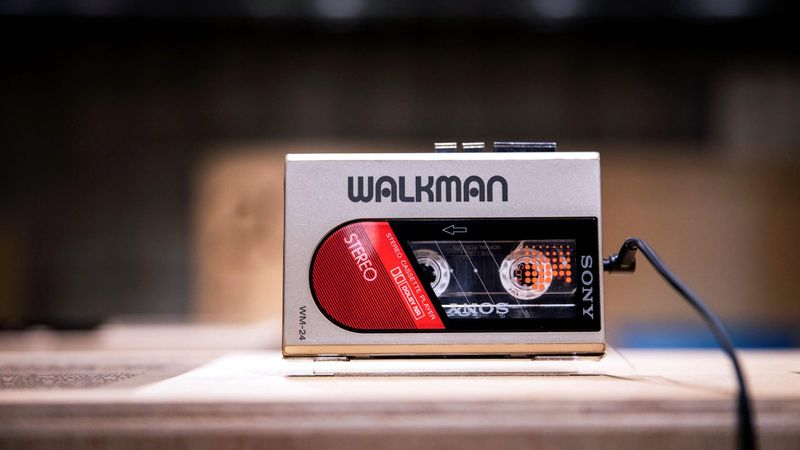
In 1979, the Walkman transformed the way we experienced music, making it the ultimate symbol of coolness. This portable wonder allowed for personal soundtracks on the go, adding a rebellious edge to daily life as music lovers plugged in and tuned out.
The sight of oversized headphones and Walkmans became synonymous with cutting-edge style. Teens confidently strutted through parks and streets with their music, enjoying newfound freedom to explore soundscapes privately. The Walkman era marked a turning point, where music became a personal, portable experience.
Walkmans were more than gadgets; they were gateways to individuality and self-expression. The ability to curate personal playlists was revolutionary, allowing for a connection to music that was intimate and profound. This cultural shift redefined how we interact with sound, leaving an enduring legacy of innovation and independence, where the beat of one’s own drum took on new meaning.
15. The Sony Betamax Debate

The Sony Betamax Debate of 1979 was a household saga, with families divided over the superiority of Betamax versus VHS. Arguments echoed through living rooms as loyalists passionately defended their chosen format, citing quality, convenience, and availability as battlegrounds.
The Betamax camp boasted superior picture quality, while VHS advocates pointed to longer recording times and wider selection. This technological tug-of-war was more than just about tapes; it was about identity and pride in choosing the “right” side. Families gathered around bulky players, each session a lesson in patience and diplomacy.
Despite the debates, this era marked a revolution in home entertainment. The ability to record and replay favorite shows transformed viewing habits, creating a new era of media consumption. The Betamax vs. VHS debate left an indelible mark on technology history, a reminder of the passion and personal investment that new innovations can inspire.
16. Atari Thumb Syndrome
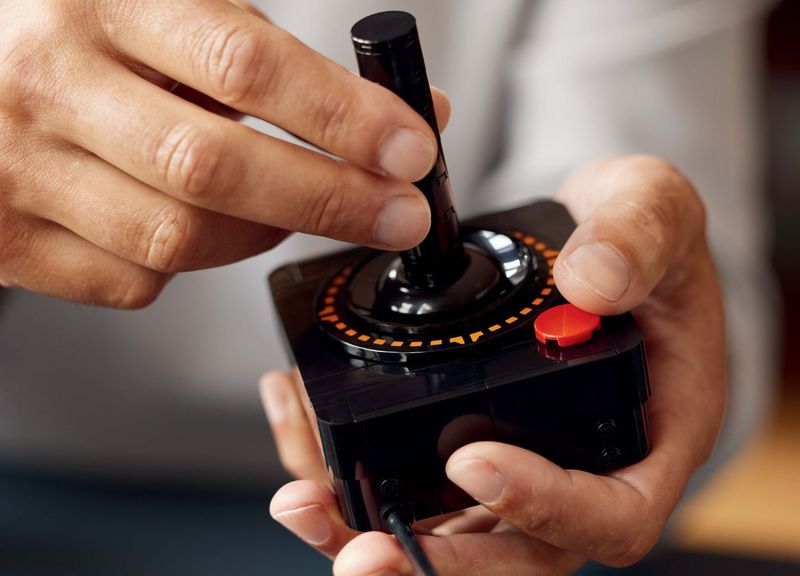
Atari Thumb Syndrome swept through 1979 like a gaming epidemic, as budding gamers spent hours playing Pong or Space Invaders. This affliction, marked by blistered thumbs and intense concentration, was a badge of honor among those who embraced digital entertainment’s early days.
The Atari console transformed family rooms into arcade arenas, where high scores and bragging rights were the ultimate prizes. Players leaned in, fingers dancing over buttons and joysticks, navigating pixelated worlds with fervor and skill. Each session was a blend of competition and camaraderie.
Despite the sore thumbs, the allure of Atari was irresistible. It was a gateway to virtual adventures, fostering creativity and quick reflexes. The Atari era marked a turning point in entertainment, where pixels sparked imaginations and gaming became a cherished pastime. This digital revolution left a legacy of innovation, forever changing how we play and connect with technology.
17. The Magic 8-Ball as Trusted Advisor
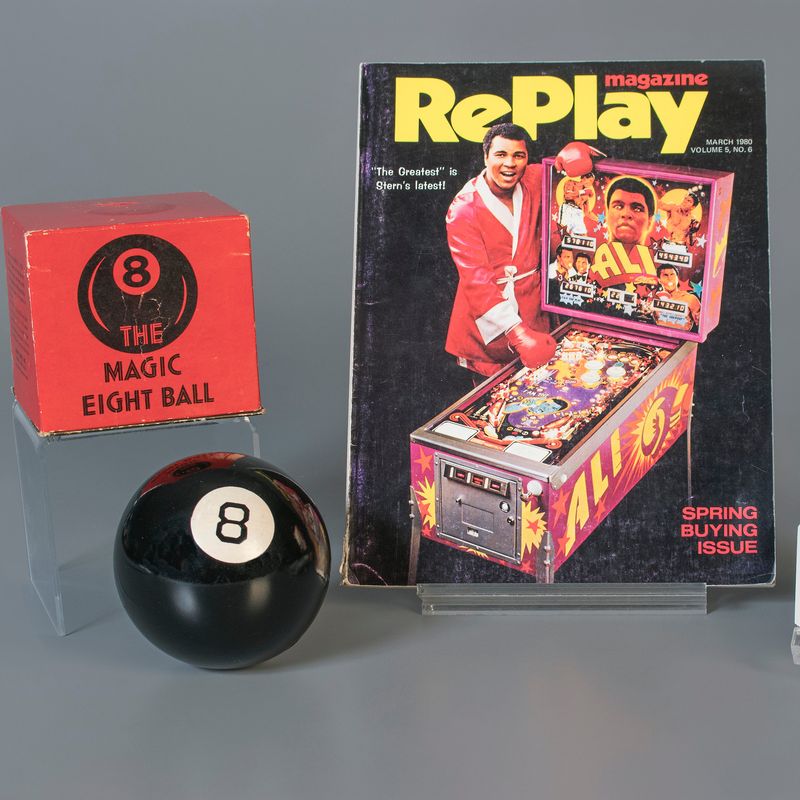
In 1979, the Magic 8-Ball emerged as a trusted advisor, guiding decisions with its enigmatic wisdom. Teenagers turned to this plastic oracle for answers to life’s pressing questions, from passing math to romantic prospects. The 8-Ball’s messages of “Yes,” “No,” or “Ask again later” became mantras of the era.
The ritual of shaking the 8-Ball was a blend of suspense and amusement. Each response, floating amidst a mysterious liquid, held the power to influence plans and dreams. It was a playful yet oddly reassuring practice, as if the universe’s secrets were contained within this plastic sphere.
Beyond its fortune-telling facade, the Magic 8-Ball was a cultural icon. It embodied the playful curiosity and hopeful spirit of the age, where mystery was embraced and the future was a question away. This simple toy left a profound impact, inspiring generations to seek answers and delight in the unknown.
18. The Rotary Dial Marathon
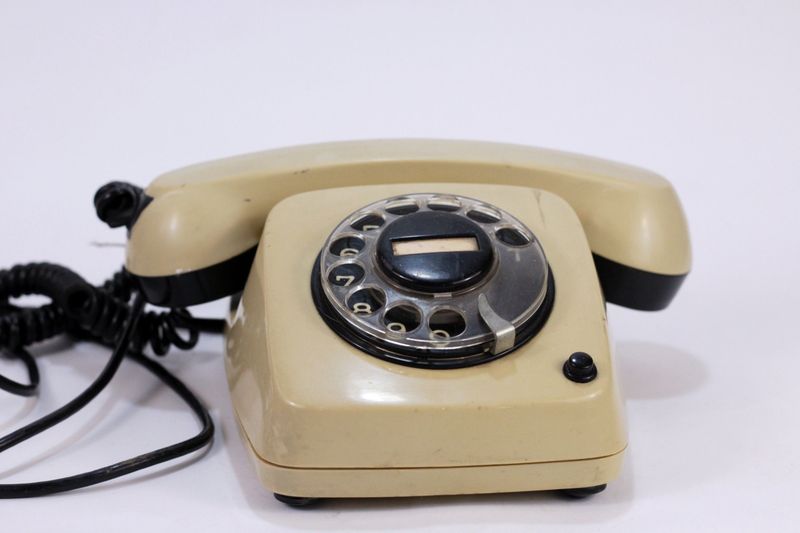
The Rotary Dial Marathon of 1979 was an exercise in patience and dexterity, requiring real finger strength and determination. Dialing a friend’s number was a slow, deliberate process, with each turn of the dial echoing through the room like a countdown to connection.
This tactile experience was a test of endurance, as fingers circled the dial, inching closer to conversation. The satisfying click of the return was a reward for persistence, a precursor to the voice on the other end. It was a ritual that demanded focus and care.
In an age before speed dial, the rotary phone was a symbol of communication’s tactile nature. It connected people not just through sound but through the shared rhythm of dial and pause. This era of patience and anticipation left a legacy of interconnectedness, where each call was an event, a moment of human connection amidst the whirl of the dial.
19. Saturday Morning Cartoon Ritual
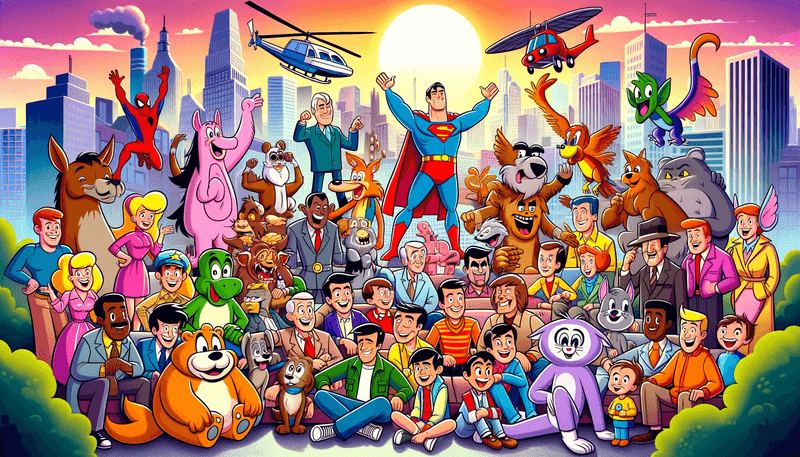
Saturday mornings in 1979 were sacred, dedicated to the cartoon ritual that brought kids out of bed at dawn. This weekly tradition saw youngsters glued to the TV with sugary cereal in hand, savoring the only day they voluntarily woke up early.
Cartoons were a magical escape, each show a new adventure filled with laughter and imagination. The living room became a theater where animated heroes and villains captivated audiences, creating memories that lasted a lifetime. It was a bonding experience, shared with family or friends, over bowls of colorful cereal.
These mornings were more than just entertainment; they were a cherished routine that marked childhood. The simplicity and joy of cartoons fostered creativity and connection, leaving an indelible mark on generations. This ritual of relaxation and imagination became a cultural touchstone, celebrating the innocence and wonder of youth in a time before streaming and on-demand viewing.
20. Typewriters and White-Out
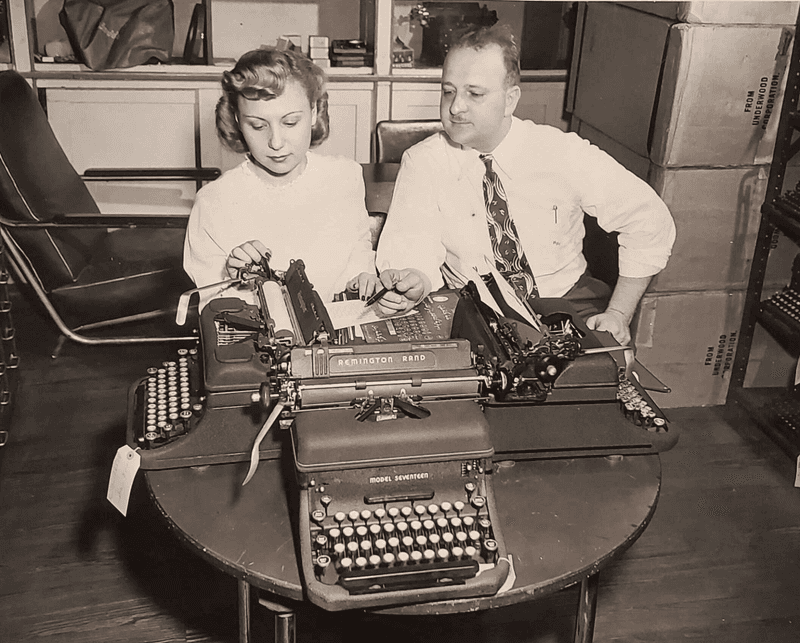
The clatter of typewriter keys in 1979 was music to the ears of students and professionals alike. Yet, with every keystroke came the risk of error, and White-Out became an essential companion. This goopy liquid, drying like paint, was the savior of countless pages marred by typos.
Typewriters demanded precision and focus, with each letter an irretrievable commitment to the page. Mistakes were moments of frustration, quickly erased with a stroke of White-Out’s brush. It was an art form in correction, blending patience and dexterity to maintain the integrity of the written word.
This era of typewriters and White-Out captured the essence of determination and resilience. It taught perseverance in the face of imperfection, fostering a respect for the written word as both an art and a discipline. The sound of keys and the scent of White-Out became symbols of creativity and dedication, leaving a legacy of tactile engagement with text.
21. Recycling Jeans into Shorts

In 1979, the DIY spirit thrived as jeans turned into shorts, marking the birth of a fashion revolution. Scissors in hand, teenagers embraced creativity, transforming old denim into summer-ready attire with frayed edges and personal flair.
This trend was a statement of individuality and resourcefulness, as each pair of cutoffs became a canvas for expression. The process of cutting and styling was an act of liberation, rejecting the constraints of store-bought fashion in favor of personal innovation. It was the ultimate in sustainable chic.
Recycling jeans into shorts was more than a fashion choice; it was a lifestyle. It celebrated the beauty of imperfection and the joy of creation. This handmade approach to style resonated with the era’s ethos of authenticity and rebellion, leaving a lasting impact on the world of fashion and self-expression. The legacy of DIY fashion endures, inspiring generations to embrace their unique style.
22. Disco Roller Rinks
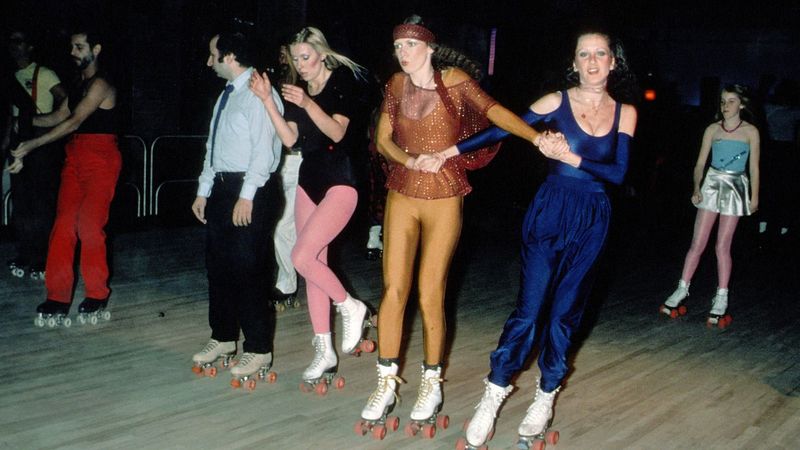
Disco Roller Rinks in 1979 were vibrant social hubs, where Friday nights came alive with music, movement, and magic. Skaters donned their best disco attire, gliding gracefully or attempting daring limbo moves under swirling disco balls. It was an era where style and skill collided on wheels.
These rinks were more than just places to skate; they were stages for self-expression and connection. The dance floor extended onto the rink, where friendships blossomed and rivalries sparked. Every spin and twirl was a testament to the joy of skating and the thrill of the disco era.
The allure of disco roller rinks lay in their ability to transform the ordinary into the extraordinary. It was a world of color and rhythm, where the music carried skaters away on journeys of joy. This fusion of movement and melody created unforgettable experiences, leaving a legacy of laughter and light that endures in the hearts of those who danced on wheels.
23. Mood Rings as Emotional Indicators
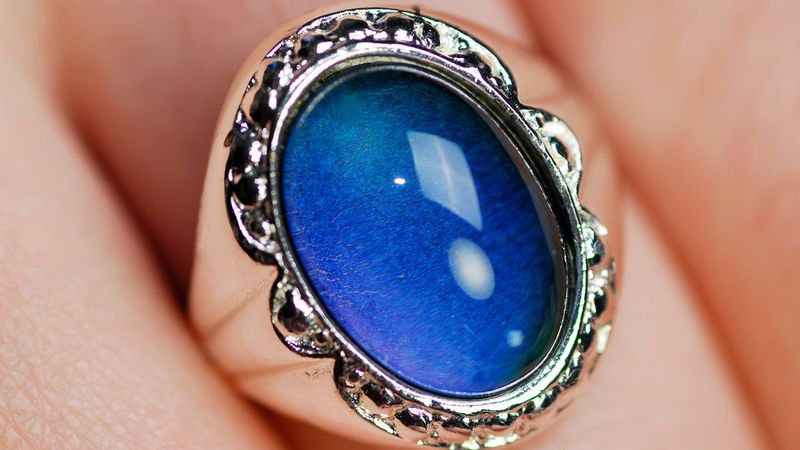
Mood rings in 1979 were more than just fashion accessories; they were portals into the mysteries of emotion. These magical bands, changing colors with the wearer’s temperature, were believed to reflect inner feelings, though usually just indicating sweaty palms.
Teenagers examined these shifting hues with fascination, interpreting each color as a sign from the universe. Whether vibrant blue for calm or fiery red for passion, the rings became trusted confidants in the quest for self-discovery. It was a playful exploration of mood and meaning.
Beyond the science, mood rings captured the imagination, embodying the era’s curiosity and whimsy. They served as reminders of the ever-changing nature of emotions, offering both insight and amusement. This simple yet enchanting accessory left a mark on popular culture, celebrating the interplay between color and mood with flair and fun.
24. Boom Box Battles

Boom Box Battles in 1979 turned streets into stages, as teenagers carried massive portable radios on their shoulders. These thundering sound machines became symbols of strength and musical preference, each battle a contest of volume and taste.
The streets pulsed with energy as music filled the air, creating impromptu dance floors and social gatherings. Each boombox was a declaration of identity, with playlists echoing personal style and passion. These battles of sound and rhythm united communities, fostering connections through shared beats.
Beyond the volume wars, boomboxes were cultural icons, embodying the spirit of the era. They brought music to the masses, empowering individuals to express themselves in bold and unyielding ways. This blend of technology and creativity left a legacy of innovation and independence, where the power of music transcended boundaries and boomed through the collective heart of youth culture.
25. The Thrill of Buying Music
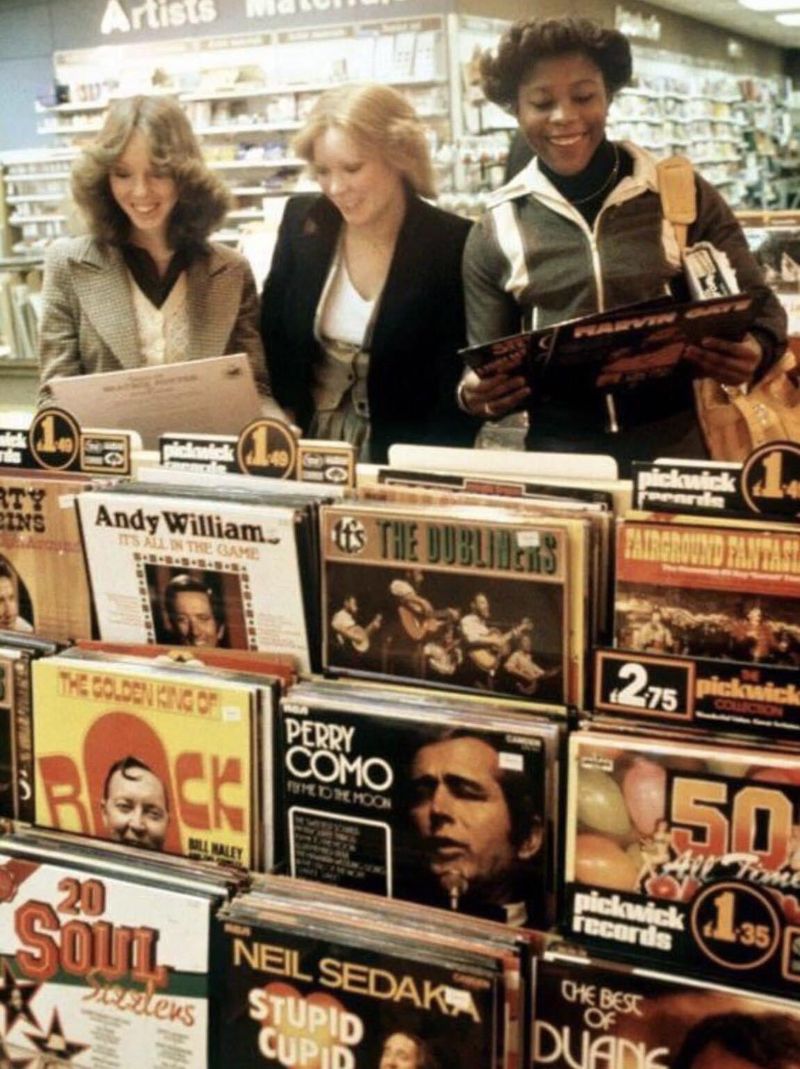
The thrill of buying music in 1979 was an event, a ritual that combined anticipation and delight. Racing home from the record store, teens carefully peeled off the plastic wrapping, savoring album artwork as part of the experience.
The tactile joy of handling a new record, the promise of fresh melodies and lyrics, was unparalleled. Each album was a journey waiting to unfold, with liner notes and cover art adding layers to the musical narrative. It was a celebration of sound and creativity.
This era of music buying was marked by discovery and connection. Record stores were havens of exploration, where fans shared recommendations and passions. The act of purchasing music was more than a transaction; it was a personal investment in art and culture. This tradition left an enduring legacy, reminding us of the powerful bond between music and memory, where each record held stories of both artist and listener.
